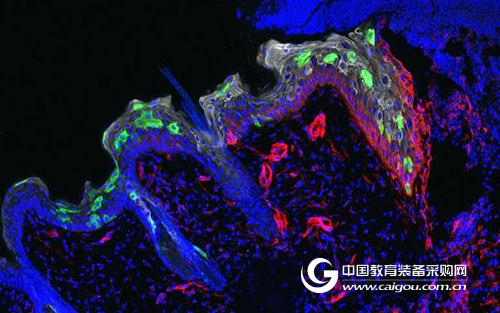Guide
Scars will fade, but the skin will leave memories. A new study from Rockefeller University in the United States shows that wounds or other harmful inflammatory experiences can bring long-lasting memories to stem cells in the skin, allowing them to treat subsequent damage more quickly.

A new study published online by Nature on October 18th, with skin as the research object, provides the first evidence that human parts other than immune cells can remember the inflammatory response.
Professor Elaine Fuchs, one of the authors, believes that the findings can better understand and treat a range of diseases: “By enhancing the response to inflammation, these memories help the skin maintain its integrity, one of which is beneficial for wound healing. However, This memory can also have harmful effects, such as the recurrence of certain inflammatory diseases such as psoriasis."
Epithelial stem cells have immune memory
It has long been known that the immune system maintains a memory of inflammation and produces a faster response to recurrent infections. But scientists at the Fuchs professor's lab suspect that other types of long-lived cells may also remember inflammation. Among them, the skin is a logical place for investigation: as a protective barrier to the body, it has withstood frequent attacks.
They will soon discover that most of the cells in the outermost layer of the skin, the epithelial cells, are not long enough to form such memories. Instead, they eventually shed by migration of epithelial cells. However, deeper in the epithelium is responsible for the continuous replenishment of stem cells. After recovering from inflammation, these stem cells remain in their original position in the skin for a long time.
In a mouse experiment, the researchers found that skin wounds that had undergone inflammation recovered more than twice as fast as skin that had never had inflammation, even though the initial damage experience had occurred for up to six months. It is equivalent to about 15 years in people.
The team believes that healing is accelerated because stem cells that have undergone inflammation are better able to enter the wound repair phase. This function is adapted to maintain macrophages or T cells in the skin.
Molecular mechanism of obtaining memory
In other experiments, the researchers discovered the basic mechanisms by which these cells acquire memory. They found that inflammation triggers a process that opens up different sites in the cell's chromosomes, allowing certain genes to be activated. Some of these sites remain open for a long time after skin recovery, allowing genes in the second round of inflammation to start faster.
A gene called Aim2, which encodes a "damaged and dangerous" sensory protein, is particularly critical: the first round of inflammation causes its expression to continue to increase. The second injury rapidly activates the protein, producing downstream inflammatory signals caspase-1 and interleukin-1β, which promote the migration of stem cells to the wound to eliminate inflammation.

Stem cells (green) migrate to the wound for repair
May lead to new treatments
Inflammation sometimes ravages and occurs in its own immune diseases such as psoriasis, often occurring multiple times in the same place. New findings suggest that the skin itself may contribute to this recurrent response.
But in fact, these effects are not only found in the skin on the surface of the body. The findings of the research team may also involve inflammatory diseases in other parts of the body, such as problems in the inner part of the intestine, which are also supplemented by epithelial stem cells like skin.
For a long time, inflammatory diseases have been considered to be the violation of the body by immune cells. The results of this study suggest that immune cells are clearly not the only cause: stem cells may also be an important factor.
Since the therapeutic capacity of stem cells decreases with age and completely disappears in cancer, reprogramming through inflammation is also important for these conditions. Researchers believe that understanding the effects of inflammation on stem cells and other parts of tissue will revolutionize our understanding of many diseases, including cancer, and may lead to new treatments.
Shanghai Chuangsai Technology has excellent performance, interleukin cytokines, fetal bovine serum, electrophoresis equipment scientific instruments, raw material drug standards, chemical reagents, cell culture consumables, Shanghai Chuangsai, mass products special promotions, welcome to inquire!
Kabelline Lipolytic Slimming,Kabelline Fat Dissolver,Kabelline Fat Dissolving,Kabelline Forfat Dissolving Injection
Shijiazhuang Asa Technology Co., Ltd. , https://www.asaantiwrinkle.com